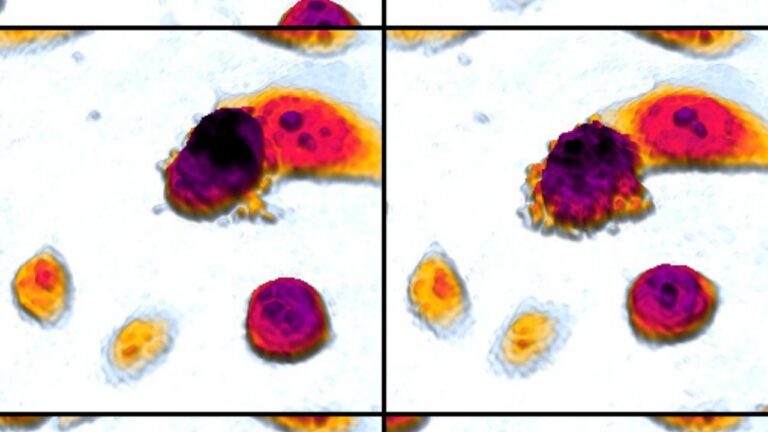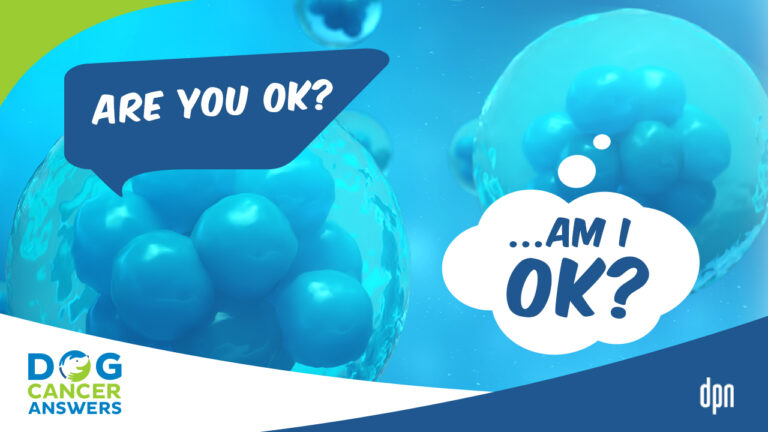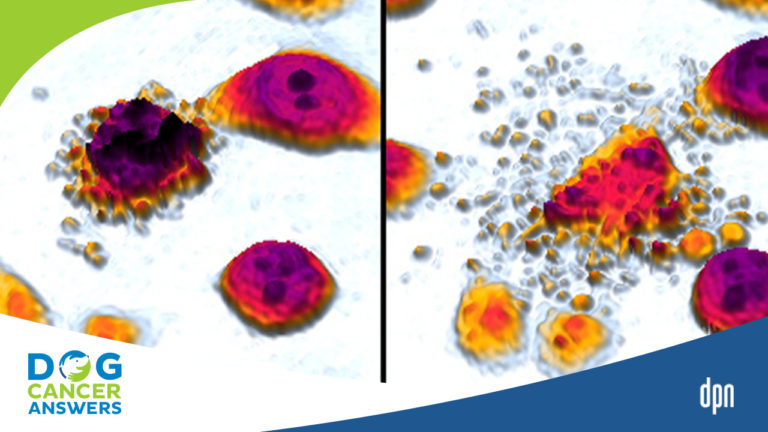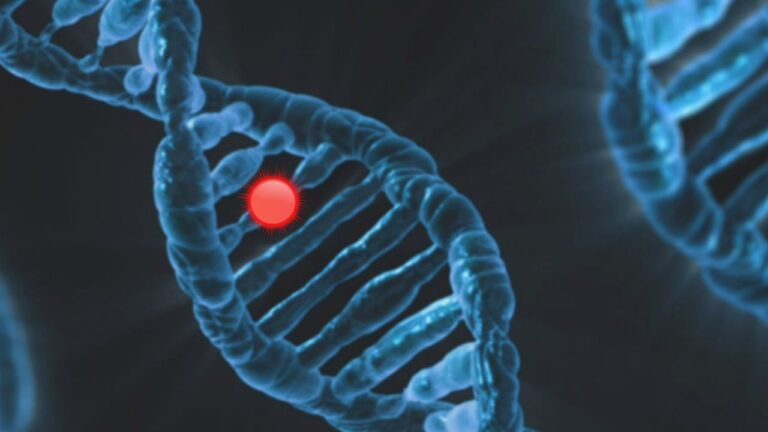Apoptosis and Dog Cancer
What makes cancer cells different from normal cells? That's a simple question with a complicated answer. In this post, we're looking at just one of the basic differences: apoptosis.

Read Time: 4 minutes
Apoptosis and dog cancer, or programmed cell death, is such an essential topic that an entire chapter of The Dog Cancer Survival Guide is dedicated to it. The word apoptosis means “falling away” in the original Greek. It is meant to depict the natural death part of the life cycle, like a leaf changing color and dropping in fall.
Some death is natural, in other words.
In this article, I will offer a few videos and some very brief explanations to find out why a lack of apoptosis is a factor in cancer. Or, as one writer cleverly put it, cancer is a failure of apoptosis.
Apoptosis: a Natural Way To Die
Every day in the adult human body, 50 to 70 billion cells die and get flushed out. And we don’t notice a thing!
That’s because the process of natural cell suicide, or apoptosis, is entirely pain-free.
Here’s a beautiful video showing apoptosis in a human melanoma cell. Watch how it kind of shrinks up and the colors of individual parts of the cell swirl together.
Why Would a Cell Commit Suicide, Anyway?
Well, there could be several reasons, depending upon the cell.
- Some cells need to make room. For example, we all had webbed hands in our mother’s womb … until at a certain point the cells in those webs started to commit suicide, and by apoptosis, created our fingers.
- Some cells get damaged. Perhaps they are damaged by viruses, infections, bacteria, etc.
- Some cells get deranged. They are changed at the DNA level by a chemical or medication, radiation exposure, or trauma.
- Some cells get old. They simply reach the end of their lifespan. They die and are replaced by new, healthy cells.
In any of these cases, a cell’s DNA will naturally turn on apoptosis genes so that the cell naturally, painlessly, easily kills itself.
Apoptosis for Health
As you can see from the list above, apoptosis genes are REALLY important. They are built into the DNA of every cell in the body, and they are constantly monitoring their cell’s health.
The apoptosis genes are always alert for changes. Changes in the DNA (derangement), damage to the cell, or an inability to function anymore (end of lifespan) “turn on” the apoptosis genes, so they can:
- shrink the cell’s size, probably to keep it from harming its neighbors as it kills itself
- dismantle the cell’s structures
- create “apoptotic bodies,” little tiny dead cell bits that are gobbled up by immune system cells called macrophages
Apoptosis genes are sort of like the automatic braking system in your car. They are always monitoring, but only kick in when necessary.
Here’s a DOG CANCER ANSWERS podcast episode featuring a biology professor, Amanda Kin, explaining apoptosis in plain language.
Apoptosis in Cancer
So … what happens when apoptosis levels are too low? In other words, when cells keep living in an abnormal fashion? Or, in other words, when the automatic braking system is disabled?
Cancer happens, for one. Cancer can be thought of as abnormally low apoptosis levels in body cells.
What Happens When Apoptosis Is Suppressed
Without active apoptosis genes to stop them, cancer cells aim to keep living and keep reproducing. They consume body resources, destroy normal architecture, hijack the immune system, derange body metabolism, and continue to live at any cost.
Ultimately, they zero in on destroying the body that nourishes them.
All Cancers Feature a Lack of Apoptosis
In fact, a lack of apoptosis is a characteristic that ALL cancers share. For a disease to be called cancer, it must (among other hallmarks) resist cell death or lack apoptosis.
Cancer makes sure that the apoptosis genes in a cell do NOT get activated. It effectively tells them to “sleep.” With the apoptosis genes asleep, and the automatic braking system turned off, the cancer cell can multiply as much as it wants to. It can live forever — because no apoptosis genes are awake to make it commit suicide!
Whether you are talking about lymphosarcoma, mast cell tumors, hemangiosarcoma, osteosarcoma, mammary cancers, melanoma, or any other type of cancer … they all feature a lack of apoptosis.
What Can Restore Apoptosis
So how do we “wake up” those apoptosis genes? Well, there are several apoptogens out there. Apoptogens are agents that induce apoptosis.
Chemotherapy and Radiation
For example, we once thought that conventional cancer treatments like chemotherapy and radiation killed cancer cells directly (cytotoxicity).
That’s often true. And, it turns out, after we have learned more about apoptosis, that some of those treatments ALSO induce apoptosis.
So, they’re killing cancer cells directly AND they are waking up apoptosis genes so the cells will commit suicide.
Compounds in Foods
There also are dietary factors that support normal apoptosis levels. In fact, in countries where the cancer rates are low, they tend to eat a lot of ingredients that promote healthy apoptosis.
These are mostly plant-based foods that have bitter and brightly colored compounds. Curcumin, luteolin, apigenin, silymarin, gingerols, rutin … these are all found in things like celery, parsley, turmeric, the rinds of citrus fruits and the hulls of peanuts.
I think cancer rates are so high in the West, in both canine and human, may be in part because we tend to eat diets much lower in these dietary apoptogens.
Best to all,
Dr D
Editor’s Note: Dr. Dressler dedicates an entire chapter of The Dog Cancer Survival Guide to nutraceuticals that are apoptogens.
Here’s a great video that explains apoptosis very clearly. You’ll see how complicated it is — and why it’s so important!
Editorial Note: This post was originally published on a retired blog about dog cancer.
Demian Dressler, DVM
Topics
Did You Find This Helpful? Share It with Your Pack!
Use the buttons to share what you learned on social media, download a PDF, print this out, or email it to your veterinarian.
Editor's Picks
CATEGORY
RELATED POSTS
Sorry, we couldn't find any posts. Please try a different search.







